| Home |
| Acknowledgments |
| Conventions |
| Glossary |
| Maps |
| References |
| Links |
| Articles |
| Thumbnails |
| Species
list |
| Family |
| Next
species |
Additional Photos

front
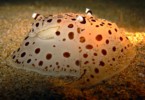
side
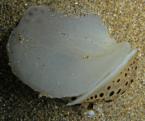
underside
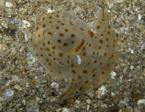
young, about 20 mm
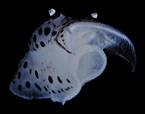
swimming

mating
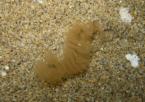
egg mass?
_______________
GALLERY

Euselenops luniceps (Cuvier, 1817)
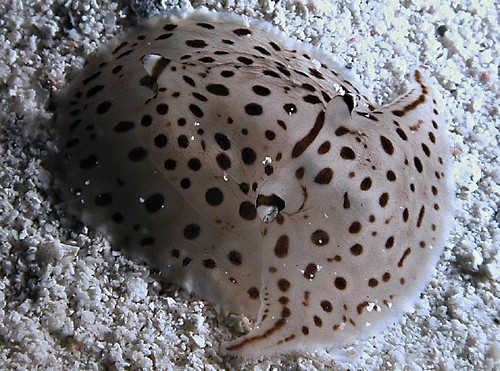
| Maximum size: 60 mm (Kay,
1979). Identification: This distinctive species is cream with dark brown spots and a broad oral veil fringed with short white papillae. Natural history: Euselenops luniceps is a rarely seen sand dweller that partially buries itself in the sand during the day (usually with the rhinophores and posterior siphon exposed). It forages for small invertebrates at night. (Note 1) It's been recorded from < 1 to 65 m (< 3 to 213 ft), the latter from dredging, and can swim in a manner similar to Hexabranchus. (Kay, 1979). It probably lays a light brown, sand-anchored egg mass. (Note 2) Distribution: Maui, Oahu and Raita Bank: widely distributed in the Indo-Pacific. Taxonomic notes: ( ) Photo: Mike Severns: Jul., 1993. Observations and comments: Note 1: To see a video of one feeding (by Patty Daly) go here. Note 2: On June 18, 2013 two light brown, sand-anchored egg masses were found in the general vicinity of the two E. luniceps found by Gordon Hendler. The masses seemed similar in form to other pleurobranch egg masses but were anchored in the sand at one end rather than attached to an object. By process of elimination, it seems likely that they were laid by E. luniceps (although it hasn't been confirmed directly). On average, they were several cm in length but they folded and stretched dramatically (accordion-fashion) as they swayed in the surge. (see photos) |
| Thumbnails |
Species
list |
Family | Next species | Top |